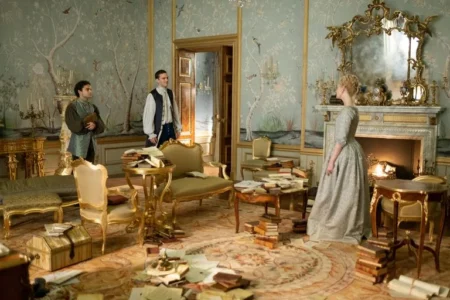Catherine the Greats Furniture, one of Russia’s most formidable and influential monarchs, reigned from 1762 to 1796, leaving an indelible mark on the nation’s cultural and political landscape. Beyond her political achievements, Catherine was a passionate patron of the arts, architecture, and interior design. Her taste in furniture, in particular, reflected her desire to position Russia as a cultural powerhouse on par with the great European courts. The furniture commissioned and collected during her reign is a testament to her refined taste, her love of luxury, and her ambition to modernize Russia.
The Influence of European Styles
Catherine the Greats Furniture was deeply influenced by the Enlightenment and the artistic trends of Western Europe. She corresponded with philosophers like Voltaire and Diderot, and her furniture choices mirrored the sophistication and elegance of French and Italian design. The Rococo and Neoclassical styles, which were dominant in Europe during her reign, heavily influenced the furniture produced in Russia under her patronage.
Rococo furniture, characterized by its ornate carvings, curved lines, and playful motifs, was particularly popular in the early years of her reign. Catherine the Greats Furniture, such as the Winter Palace in St. Petersburg and the Catherine Palace in Tsarskoye Selo, were filled with pieces that showcased intricate marquetry, gilded finishes, and luxurious upholstery. These pieces were often crafted by European artisans or Russian craftsmen trained in European techniques.
As her reign progressed, Catherine’s tastes evolved, and she embraced the Neoclassical style, which emphasized symmetry, simplicity, and a return to the aesthetics of ancient Greece and Rome. This shift was partly influenced by her admiration for the Enlightenment ideals of reason and order. Neoclassical furniture in her collection often featured clean lines, geometric shapes, and motifs such as laurel wreaths, urns, and columns.
Master Craftsmen and Unique Commissions
Catherine the Great’s furniture was not merely imported from Europe; she also fostered a thriving domestic furniture industry. She invited skilled craftsmen from France, Germany, and England to work in Russia, training local artisans and elevating the quality of Russian-made furniture. One of the most notable figures was David Roentgen, a German cabinetmaker whose exquisite pieces were highly sought after by European royalty. Catherine acquired several of Roentgen’s works, including his famous mechanical desks, which featured hidden compartments and intricate mechanisms.
In addition to European imports, Catherine commissioned unique pieces that reflected her personal tastes and the grandeur of her reign. Her furniture often incorporated symbols of power and empire, such as the double-headed eagle of the Russian coat of arms or motifs inspired by military victories. These pieces were not only functional but also served as statements of her authority and Russia’s growing influence.
The Hermitage Collection
Today, much of Catherine the Greats Furniture is housed in the State Hermitage Museum in St. Petersburg, which she founded in 1764. The museum’s collection includes some of the most exquisite examples of 18th-century furniture, from gilded console tables to elaborately carved chairs and settees. One of the highlights is the Peacock Clock, a stunning automaton that features life-sized mechanical birds and is housed in a custom-made cabinet.
The Hermitage also showcases Catherine the Greats Furniture passion for exotic materials and techniques. Many of her furniture pieces incorporate rare woods, such as mahogany and ebony, as well as luxurious materials like mother-of-pearl, tortoiseshell, and semi-precious stones. These materials were often used in marquetry, a technique that involves creating intricate patterns and images by inlaying different materials into wood.
A Lasting Legacy
Catherine the Greats furniture is more than just a collection of beautiful objects; it is a reflection of her vision for Russia as a center of culture and sophistication. Her patronage of the arts and her commitment to fostering craftsmanship helped establish Russia as a major player in the world of design and decorative arts.
Moreover, her furniture tells the story of a ruler who was deeply engaged with the cultural currents of her time. From the playful elegance of Rococo to the disciplined beauty of Neoclassicism, Catherine’s choices reveal a woman who was both a product of her era and a shaper of it.
In the grand halls of her palaces and the carefully curated galleries of the Hermitage, Catherine the Great’s furniture continues to captivate and inspire. It stands as a lasting testament to her legacy as a monarch, a collector, and a connoisseur of beauty.
Time Squares News guides you through the latest trends and stories, providing valuable information and perspectives on current events and more.








